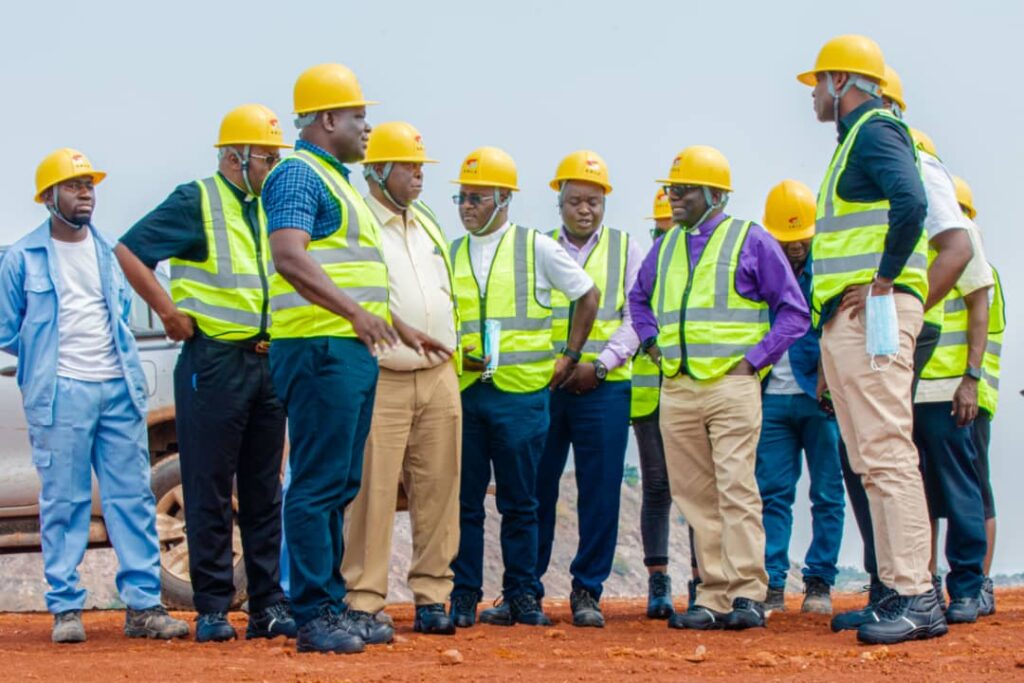Sino Metals Leach Zambia Limited says it has, in collaboration with health authorities in Kalulushi, conducted targeted health checks on residents affected by the recent pollution incident in the Kalusale community.
This follows a recommendation by Vice President Mutale Nalumango, who recently visited the mine. During her visit in September 2025, Mrs. Nalumango directed the health department at Kalulushi Municipal Council to conduct medical examinations on five residents from Kalusale who complained of health challenges after allegedly consuming water contaminated with toxic effluent discharged by Sino Metals.
The health concerns stemmed from the February 18, 2025, incident, which saw an estimated 30,000 cubic meters of acid-rich residue spill into the environment following a dam wall collapse.
Speaking when Church mother bodies, led by Council of Churches in Zambia (CCZ) General Secretary Bishop Emmanuel Chikoya, visited the mine, Sino Metals Deputy Chief Executive Officer Sydney Chileya said a pilot sampling exercise was conducted about three weeks ago.
Mr. Chileya explained that during the exercise, samples were collected from community volunteers and subsequently transported to Lusaka for detailed analysis.
He said the results from this pilot sampling are currently being awaited and will be used to inform authorities and the public regarding the health status of residents affected by the pollution incident.
“So the guidance we got was that we work with the district health team to do the sampling three weeks ago. So it was like a pilot sampling because we are now trying to look at the health of the people. Volunteers came through and samples were collected and taken to Lusaka. I think we are waiting for the results now. So that will inform us on the status of the people,” Mr. Chileya stated.
And in his presentation, Sino Metals Assistant Director Martin Amukusana attributed the dam failure to theft and mechanical tampering with the impermeable HDPE dam lining, which is mostly used in local housing and fish farming.
Mr. Amukusana, however, said the company is currently undertaking extensive restoration and compliance work.
“Additionally, the company is actively working on decommissioning redundant tailings storage facilities (TD7, 8, 9, and parts of TD15) to reduce environmental threats, with planned completion dates extending into 2026,” Mr. Amukusana stated.
He added that the firm, which is 55% owned by CNMC (China’s largest parastatal involved in mining), has maintained its entire payroll of over 500 employees despite suspending production since February, managing costs through financial partners and assurance that full operations will resume once all restoration orders are satisfied.
Meanwhile, CCZ Secretary General Bishop Emmanuel Chikoya commended the mine for the open dialogue and emphasized the importance of environmental stewardship to protect future generations.
“The disaster that occurred must become a learning curve, not only for Sino Metals but for several other mining companies, as the safety of the people has not been our priority but the money that we want to make. We strongly urge applying measures and becoming more proactive when it comes to the safety of human life.”
“Regarding the theft of dam material (HDPE liner)—including by those who roof churches—this is identified as criminal activity, and we stress that thieves should be arrested decisively, as such crime should not be treated with kid gloves. Furthermore, there must be a genuine interest in checking the short-term and long-term impacts on the health of the affected people,” he said.
To address the social impact of the pollution, Sino Metals has paid a total of K14 million to 449 affected farmers across Kalulushi and Kitwe districts. The compensation covers damaged crops and livestock for two farming seasons on an interim basis, with final compensation dependent on the conclusive Environmental Impact Assessment (EIA) report.



